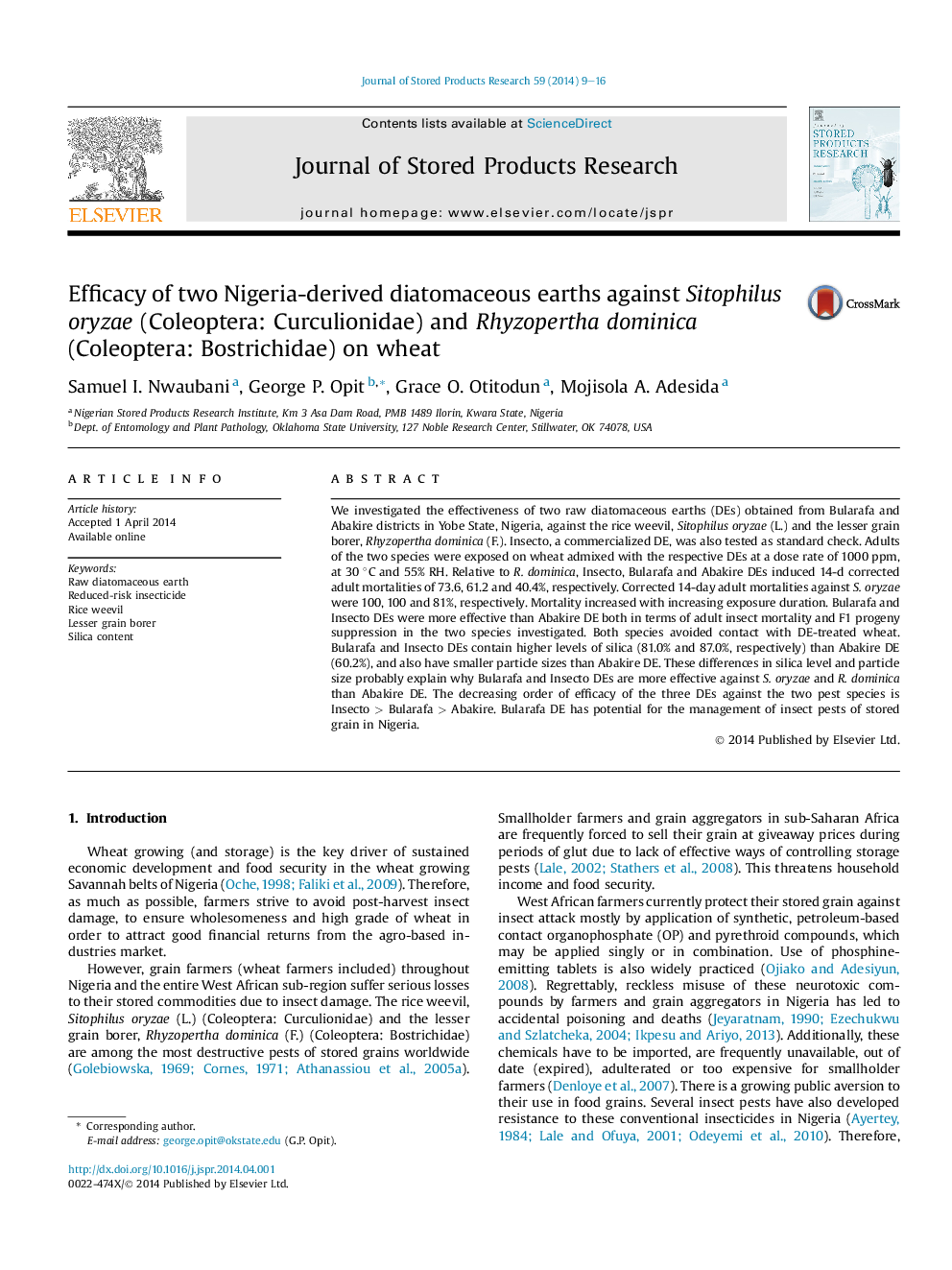| Article ID | Journal | Published Year | Pages | File Type |
|---|---|---|---|---|
| 6378395 | Journal of Stored Products Research | 2014 | 8 Pages |
Abstract
We investigated the effectiveness of two raw diatomaceous earths (DEs) obtained from Bularafa and Abakire districts in Yobe State, Nigeria, against the rice weevil, Sitophilus oryzae (L.) and the lesser grain borer, Rhyzopertha dominica (F.). Insecto, a commercialized DE, was also tested as standard check. Adults of the two species were exposed on wheat admixed with the respective DEs at a dose rate of 1000 ppm, at 30 °C and 55% RH. Relative to R. dominica, Insecto, Bularafa and Abakire DEs induced 14-d corrected adult mortalities of 73.6, 61.2 and 40.4%, respectively. Corrected 14-day adult mortalities against S. oryzae were 100, 100 and 81%, respectively. Mortality increased with increasing exposure duration. Bularafa and Insecto DEs were more effective than Abakire DE both in terms of adult insect mortality and F1 progeny suppression in the two species investigated. Both species avoided contact with DE-treated wheat. Bularafa and Insecto DEs contain higher levels of silica (81.0% and 87.0%, respectively) than Abakire DE (60.2%), and also have smaller particle sizes than Abakire DE. These differences in silica level and particle size probably explain why Bularafa and Insecto DEs are more effective against S. oryzae and R. dominica than Abakire DE. The decreasing order of efficacy of the three DEs against the two pest species is Insecto > Bularafa > Abakire. Bularafa DE has potential for the management of insect pests of stored grain in Nigeria.
Related Topics
Life Sciences
Agricultural and Biological Sciences
Agronomy and Crop Science
Authors
Samuel I. Nwaubani, George P. Opit, Grace O. Otitodun, Mojisola A. Adesida,
